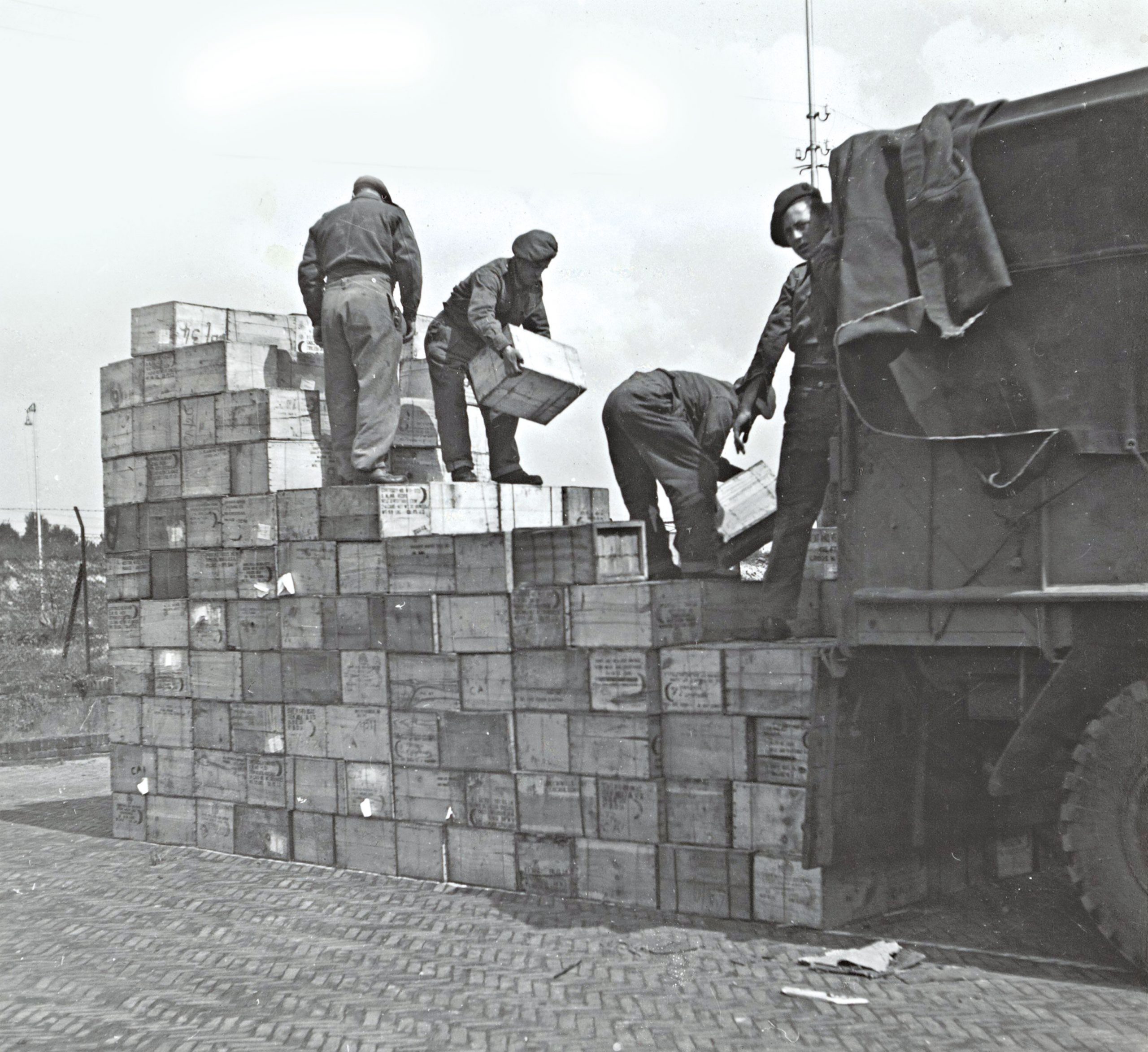
Allied aircraft conduct food drops over the Netherlands in April 1945. [Netherlands Archives 120-0739]
After September 1944, as the Allies began liberating the Netherlands, people living in enemy-occupied territory started to starve. The Germans, in retribution for a railway strike and the failed Operation Market Garden stopped food transportation for nearly two months, just as winter was arriving.
“Always that hunger…and then there was less and less. There remained nothing, not even in the black market,” recalled J. Vrouwenfelder, a resident of the Hague, in Hans Onderwater’s Operation Manna/Chowhound. “Fried tulip bulbs were the last resort.” Some 20,000 Dutch died from starvation.
Prince Bernhard of the Netherlands appealed for help. While meetings between the Allies and German high command in the Netherlands were conducted, a trial run was made in a Lancaster nicknamed Bad Penny, with Ontarian Robert Upcott at the controls and five Canadian airmen among the crew. The food was dropped successfully and the bomber returned safely.
On April 29, widespread food drops began.

Troops transfer boxes of supplies. Three hundred trucks distributed three tonnes of food apiece to starving citizens each day of the relief operations. [Netherlands Archives 512-122]
“We came in low enough to see the expressions on the faces of the people in the fields,” recalled bomb aimer Trevor Priestley. “It gave us a real thrill to watch these people as they waved and cheered us on…. To see ‘Many Thanks’ spelled out with flowers…brought tears to my eyes and I’m not ashamed of it, either!”
In subsequent flights, there was “a carnival atmosphere on the ground,” with people waving sheets and flags, he said. “After the first drop, we parcelled up our sweet rations and I had the job of trying to drop them as near as possible to groups of children…. When aircrew were not actually flying the Manna trips, they were loading aircraft panniers with food, irrespective of rank.”
In 10 days, more than 10,000 tonnes of food were dropped in some 3,100 flights by British, Canadian, Polish and Australian air crews during Operation Manna, and 2,200 flights of the U.S. Operation Chowhound, which began May 1.
With the end of the war on May 7, sea and ground transportation corridors were open, and relief flooded in.
Advertisement





















